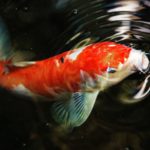Have you ever noticed a protrusion on the forehead of your cichlid fish? If so, you may have witnessed a nuchal hump – a distinctive physical feature that is prevalent among many species of cichlid fish. But what is the purpose of this mysterious hump, and why is it so important to these fish?
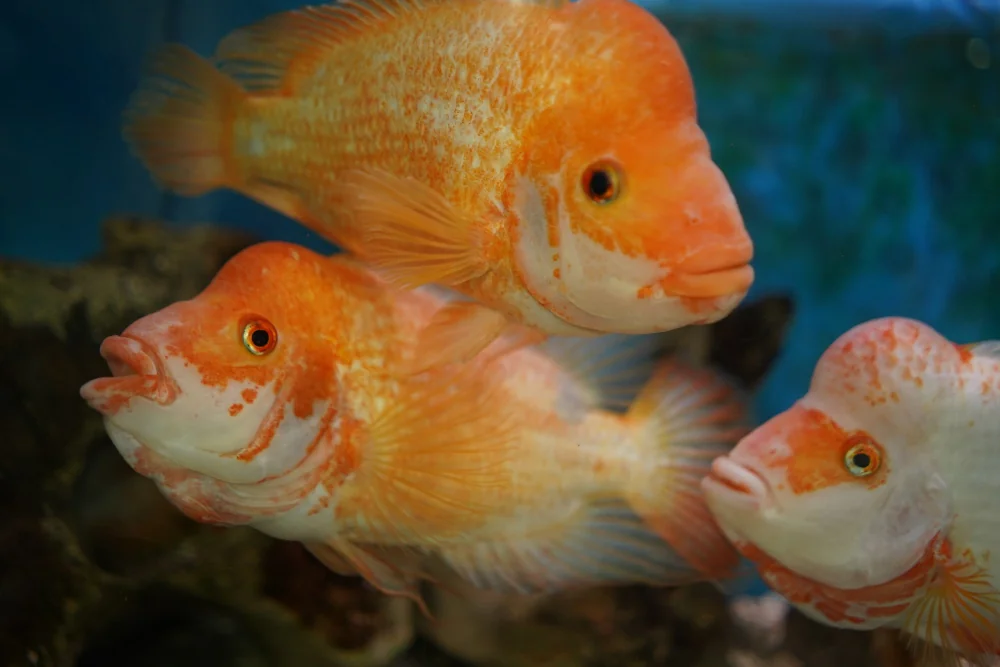
Understanding the importance of this unique feature is key to providing proper care and breeding of cichlid fish.
The nuchal hump has been the subject of much curiosity and speculation among fish enthusiasts. In this article, we will explore the shocking reasons why cichlids have nuchal humps.
CONTENTS
- Definition of Nuchal Hump and its Location on Cichlid Fish
- Size Variations of Nuchal Humps
- Purpose and Functions
- 5 Scientific Theories of Purpose and Functions for a Nuchal Hump
- Common Cichlid Species with Nuchal Humps
- Conclusion
- Reference
Definition of Nuchal Hump and its Location on Cichlid Fish
The nuchal hump is a protuberance on the forehead of some cichlids variety that varies in size, shape, and coloration depending on the species. It is composed of adipose tissue, which is a type of connective tissue that stores fat.
It is located just above the eyes and is more prominent in males than females. Some cichlid species have more pronounced nuchal humps than others, and this feature can be used to distinguish between different species.
Size Variations of Nuchal Humps
Nuchal humps in cichlids vary in size and shape depending on the species. Some cichlids, such as flowerhorns and midas cichlids, have large and distinct nuchal humps. The hump on the forehead of flowerhorn is known as “kok”.

These humps can be a defining feature of the fish, and are often used by breeders to identify certain strains or bloodlines.
On the other hand, some species, like the small shell dwellers Neolamprologus Similis, have small and subtle nuchal humps.
Interestingly, nuchal humps are not unique to cichlids. Some marine wrasses, like the Asian sheepshead wrasse, also have nuchal humps.
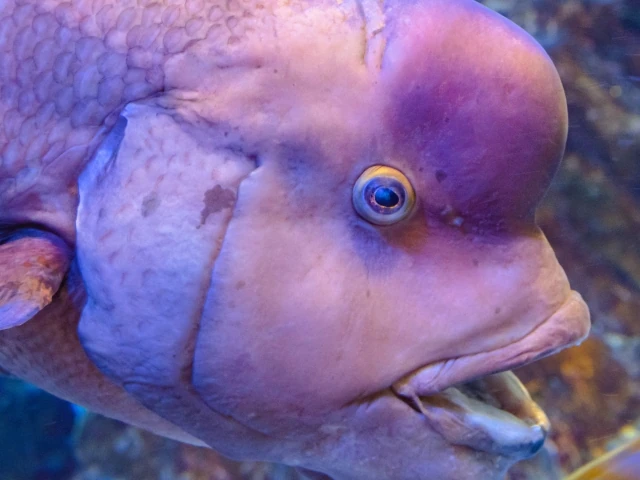

While the size and shape of the hump can vary between species, it is believed to serve a similar function in both cichlids and wrasses.
When it comes to cichlids, the size of the nuchal hump can be influenced by a number of factors. Genetics is a major factor, as some strains of cichlids have been selectively bred to produce larger humps.
The nuchal hump has become a desirable feature among cichlid fish breeders and enthusiasts, particularly in the show fish category. The Flowerhorn hybrid cichlid is a prime example of this, with its large and prominent nuchal hump being a defining characteristic.
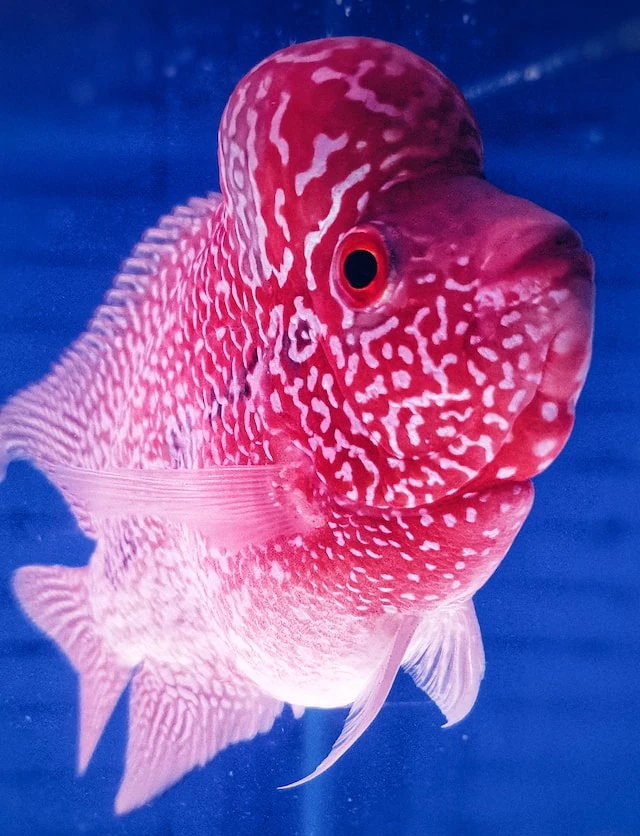
These fish can fetch a high price in the market, with the size of the nuchal hump often being a determining factor in its value. The breeding of Flowerhorns with larger and more distinct nuchal humps has become a popular pursuit among cichlid enthusiasts.
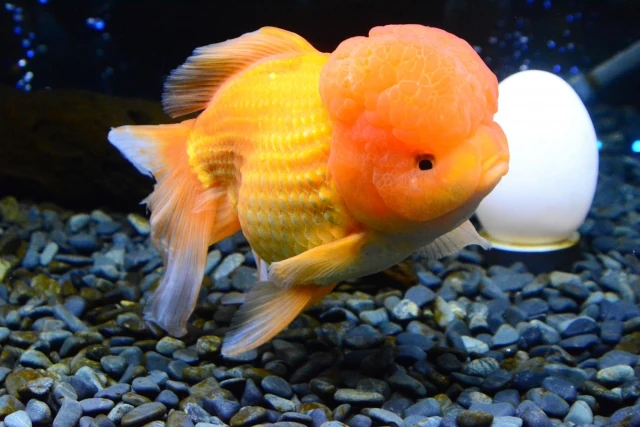
So, if you’re a fan of these fascinating creatures and you’re looking for a true showstopper, keep an eye out for cichlids with a prominent nuchal hump. It may just be the key to finding your perfect, prized specimen.
Purpose and Functions
The nuchal hump, also known as forehead swelling, serves several purposes in cichlid fish. One of its primary functions is to attract mates. In many cichlid species, males with larger nuchal humps are perceived as more attractive and dominant, and are more likely to attract a mate.
It also plays a role in food storage. Some cichlid fish use their nuchal humps as a means of storing food, which they can consume later when the spawning process takes longer, and both the male and the female parents are fiercely defending their eggs and newly hatched fries.
A nuchal hump develops in both male and female Midas cichlid (Cichlasoma citrinellum) prior to spawning, and subsides shortly after spawning.
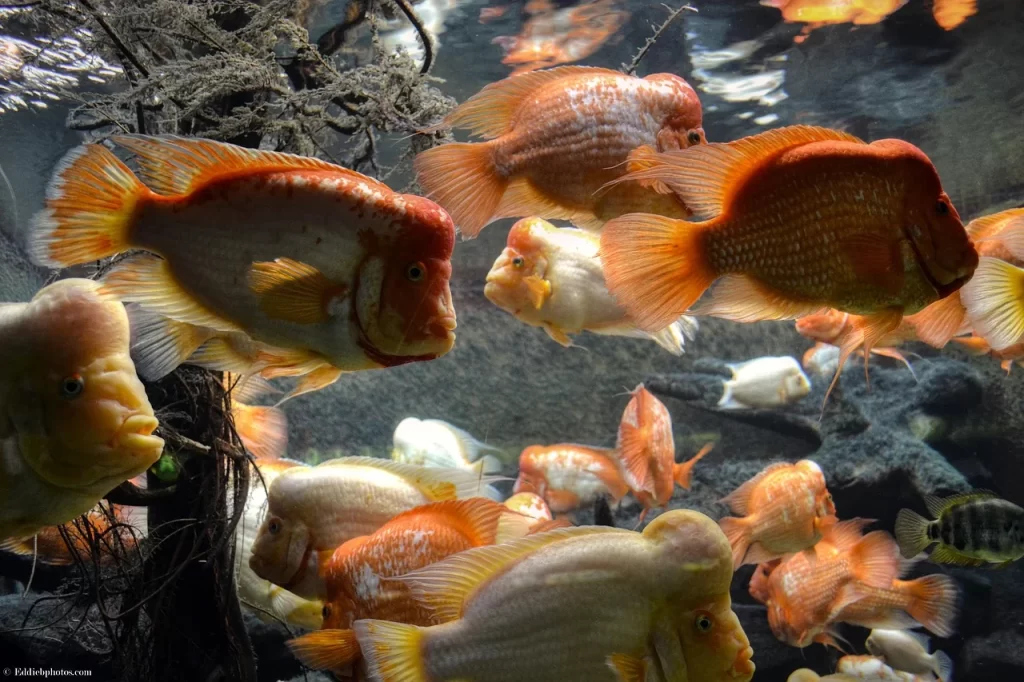
It may also be used for defense. Cichlid fish with large humps may use them to protect their young or defend their territory.
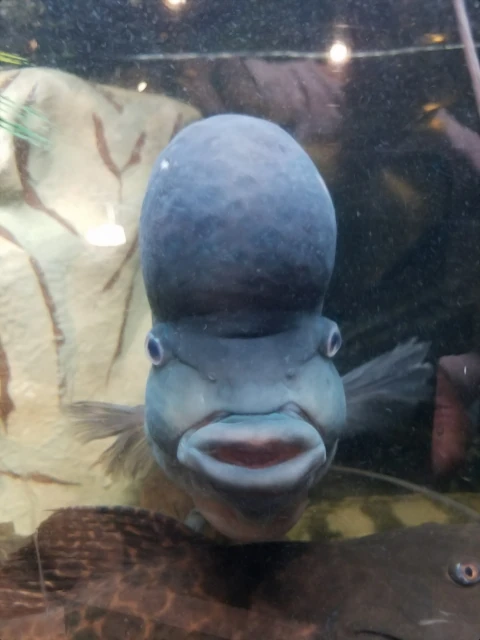
Since, the nuchal hump is mainly made up of fat, some cichlids use the stored fat in their large nuchal humps to produce ketones when the spawning process takes longer, and they are busy defending the fries from external threats.
5 Scientific Theories of Purpose and Functions for a Nuchal Hump
You must be curious about the incredible adaptation of cichlid fish and the mysterious purpose of their nuchal humps. Well, let me tell you most scientists are too.
In this section, we’ll explore 5 intriguing theories that shed light on the mysteries of nuchal humps in cichlids. From sex recognition and species identification to improved hydrodynamics and anti-predation strategies, we’ll uncover the secrets behind these remarkable adaptations.
Sex Recognition (in dimorphic species)
One of the most well-known reasons for the presence of a nuchal hump in cichlid fish is sex recognition.
In many species of cichlids, males and females have distinct differences in appearance, with males often displaying more vibrant coloration and larger, more prominent nuchal humps.
This helps to identify males to potential mates, and also plays a role in territory and mate defense.
In dimorphic species, where males and females look very different, the nuchal hump can serve as a reliable indicator of sex or gender.

For example, male Flowerhorn Cichlids are known for their prominent nuchal humps, which are often brightly colored and highly visible. Females of the same species, on the other hand, typically have smaller nuchal humps.
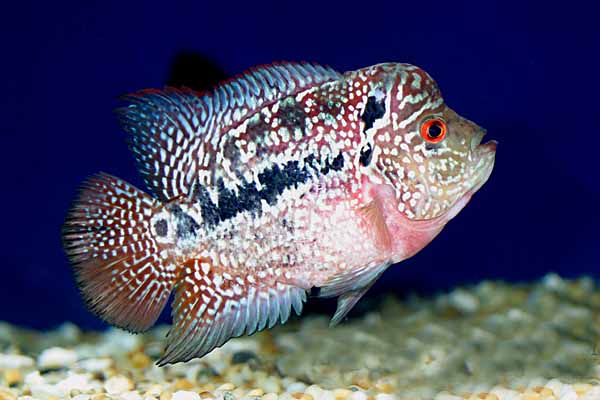
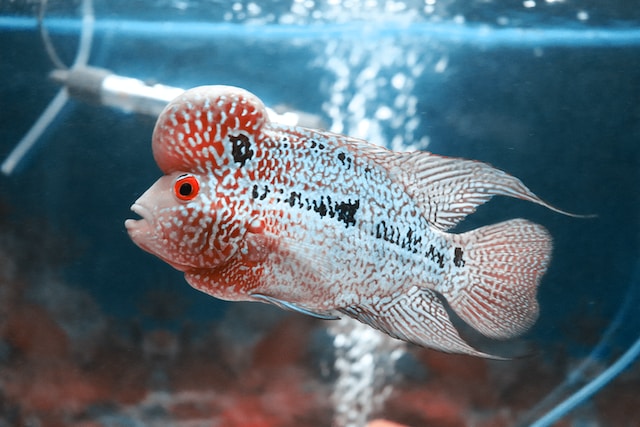
It has been observed that females prefer males with larger humps across different species of cichlids.
Species Recognition
In addition to serving as a visual indicator of sex, the nuchal hump can also play a role in species recognition.
Many cichlid species have similar body shapes and coloration, which can make it difficult to tell them apart.
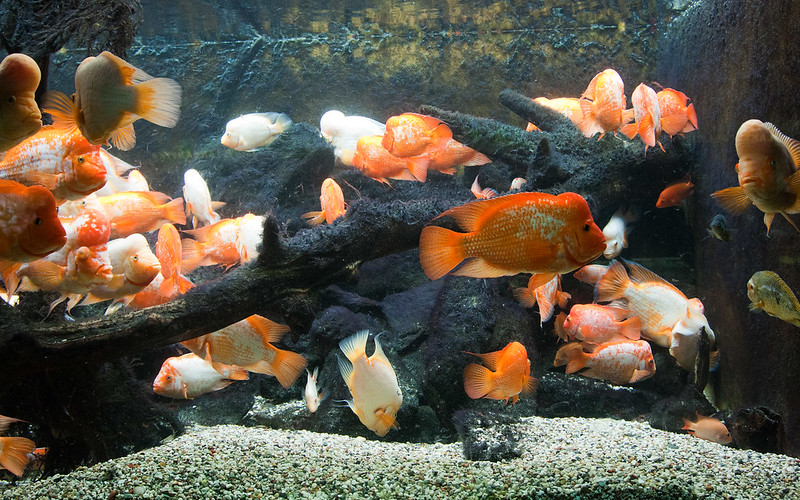
However, the presence of a distinctive nuchal hump can help fish of the same species recognize each other, even in low light or murky water.
For example, the Electric Blue Hap Cichlid is known for its bright blue coloration and distinctive nuchal hump.

This subtle bump on the head is an important part of the fish’s appearance, and helps to distinguish it from other cichlid species in its habitat.
Mechanical Advantage in a Fight
Another surprising reason for the presence of a nuchal hump in cichlid fish is its mechanical advantage in a fight. Cichlids are notoriously territorial, and males in particular are known to engage in aggressive displays and fights with other males.
In this situation, a larger hump can provide an advantage in combat.
This can be particularly important in species where territory and mate defense are closely tied to reproductive success.
Improved Hydrodynamics
Another interesting theory about the purpose of the nuchal hump in cichlid fish is that it may improve hydrodynamics. In some species, it is located near the dorsal fin, and it is still a matter of debate if it can help to reduce the drag in water and increase any maneuverability.
Anti-Predation
Finally, the nuchal hump may also play a role in anti-predation. Some cichlid species are known for their aggressive behavior, and the protrusion on the forehead can act as a sort of decoy or distraction for potential predators.
Common Cichlid Species with Nuchal Humps
Here is a list of some common cichlid species known to have nuchal humps:
- Flowerhorn Cichlid
- Oscar Cichlid
- Red Devil Cichlid
- Midas Cichlid
- Trimac Cichlid
- Texas Cichlid
- Jaguar Cichlid
- Peacock Cichlid
- Humphead Cichlid
- Frontosa Cichlid
- Green Terror Cichlid
- Parrot Cichlid
- Vieja Synspilum Cichlid
- Wolf Cichlid
- Firemouth Cichlid
- Black Belt Cichlid
- Festivum Cichlid
- Tropheus Duboisi Cichlid
- Lemon Jake Peacock Cichlid
- Red Shoulder Peacock Cichlid
- Redhead cichlid
It’s worth noting that not all cichlid species have nuchal humps, and even among those that do, the size and prominence of the hump can vary greatly.
Conclusion
In conclusion, the nuchal hump in cichlids is a fascinating adaptation that serves a variety of purposes. From sex and species recognition to anti-predation and storage of food, this seemingly innocuous lump on the head of cichlids is actually a complex structure that provides a range of advantages.
While the exact function of the forehead hump may vary between species and individuals, it is clear that this trait plays an important role in the survival and reproduction of cichlid fish.
Whether you are a seasoned cichlid enthusiast or just starting out in the hobby, understanding the hidden functions of nuchal humps can deepen your appreciation for these incredible fish and help you provide the best possible care for them.
Reference
- Function of nuchal humps of a cichlid fish from Lake Tanganyika, Springer.
- Molecular mechanisms underlying nuchal hump formation in dolphin cichlid, Cyrtocara moorii, Nature.com
- Hormonal control of the nuchal hump in the cichlid fish Cichlasoma citrinellum, Sciencedirect.com
- Nuchal Hump, Theaquariumwiki.com
- Why Do Flowerhorns Grow Nuchal Humps (Big Heads), SG Bearded Aquarist
IMAGE CREDIT:
Female flowerhorn By Inkpassion – Own work, LIcense: CC BY-SA 3.0



